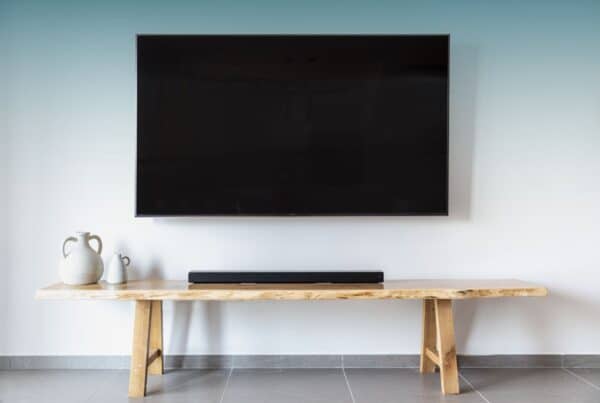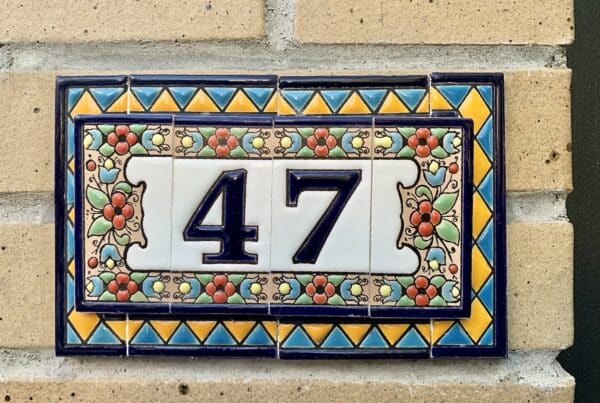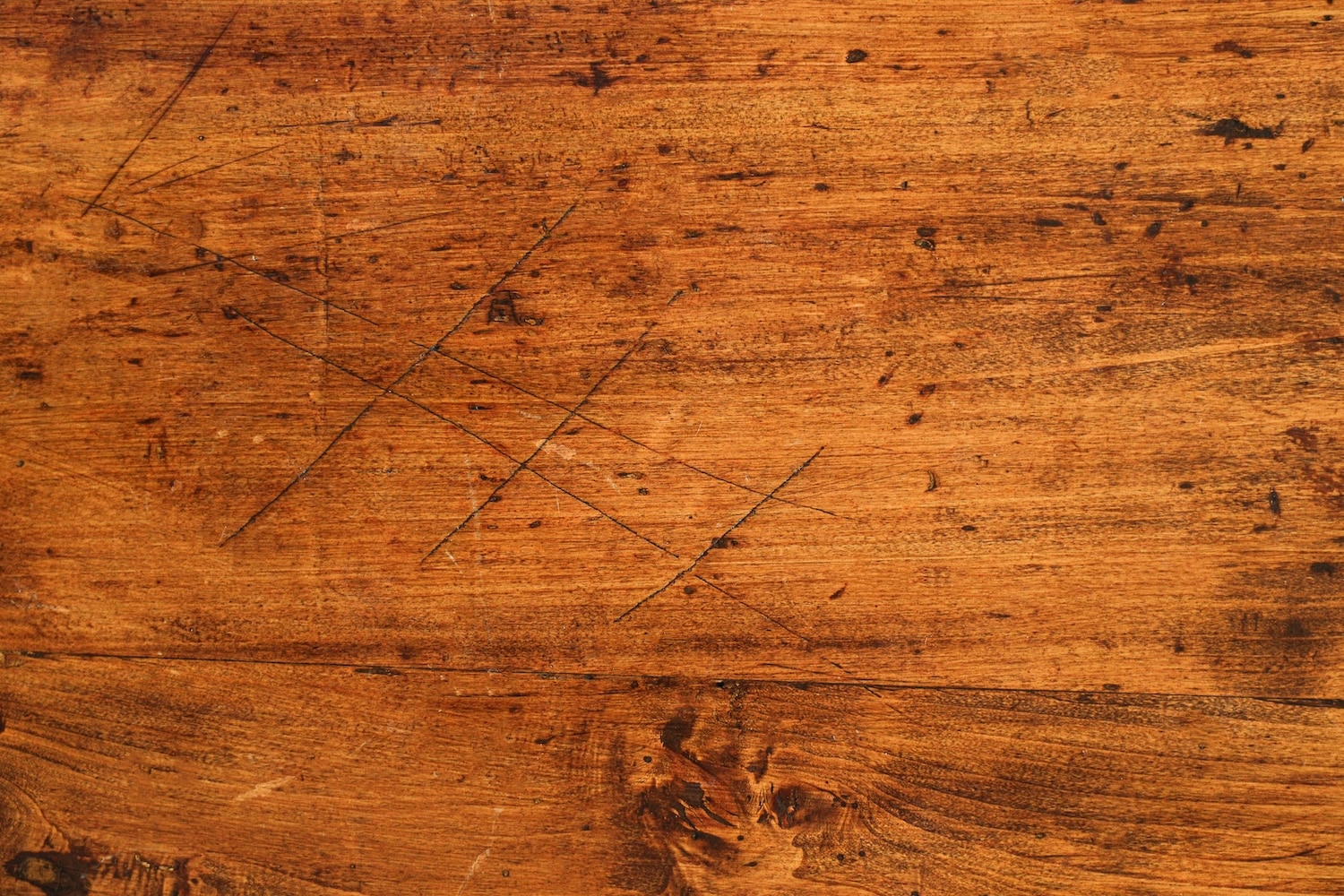
Hardwood floors are known for their beauty and durability, but even the toughest finishes can show signs of wear over time. Everyday life (like sliding furniture, pets running around, or even a bit of grit on your shoes) can leave behind small scratches that dull the finish. Knowing how to remove scratches from hardwood floors can help you preserve their look—and avoid causing more damage in the process.
Some marks are easy to fix with a bit of elbow grease. Others might go deeper into the wood and require professional help or refinishing. Either way, here’s what homeowners need to know before grabbing a scratch repair kit or deciding it’s time to call for backup.
First Things First: Identify the Scratch
Not every scratch is the same, and the right solution depends on how deep it goes.
Try this: run your fingertip or nail lightly over the mark. If it feels smooth and doesn’t catch, it’s likely a surface-level scratch in the finish.
If your nail catches, the scratch has gone deeper into the wood and may need more than a quick fix.
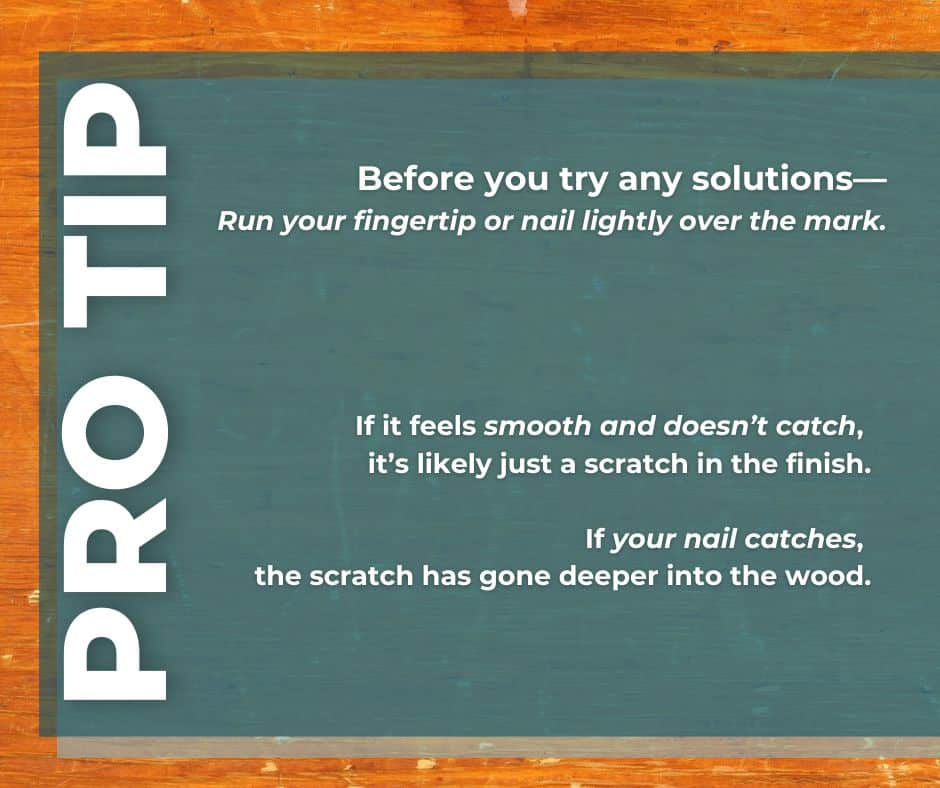
Knowing what you’re dealing with helps you avoid making the problem worse or wasting time on methods that just won’t work.
Start With a Clean Surface
From there, clean the area thoroughly. Dirt and dust can scratch the wood more if you start rubbing or buffing without clearing the surface.
Use a soft-bristle broom or vacuum made for hard floors, then wipe the area with a slightly damp microfiber cloth and a gentle hardwood cleaner.
Let the floor dry completely before applying any product or repair solution.
Reduce Light Surface Scratches
For light scratches that only affect the finish, you have a few easy options to remove them from your hardwood floors:
- Blending markers or wood touch-up pens: These are available in a range of wood tones and help camouflage light marks. Apply the marker, wipe off the extra, and gently buff.
- Walnut trick: For shallow, lighter-colored scratches, rubbing a raw walnut across the mark can help reduce its appearance. The natural oil in the nut fills in the scratch slightly, though results may vary.
- Polish or floor restorer: Some products are made to refresh hardwood finish and minimize surface-level wear. Just be sure to choose one that’s compatible with your floor’s finish and test it on a small area first.
These fixes don’t make scratches disappear completely, but they often blend them in enough to make them less noticeable, especially in natural light.
What to Try for Medium Scratches
If the scratch cuts through the finish and into the wood, blending products may not be enough. Here’s what to try instead:
- Wax sticks or fill pencils: Pressed into the scratch, these wax-based tools can fill minor gouges and match the surrounding color. Buff gently after application.
- Fine sanding and stain touch-up: If you’re comfortable with light DIY work, you can gently sand the scratched area with very fine (220-grit) sandpaper. After sanding, apply a matching stain pen and then seal it with a compatible finish.
These methods require a steady hand and patience—especially when matching color—but they can noticeably improve moderate scratches without needing to refinish the whole floor.
Dealing With Deep Scratches or Gouges
To keep expectations manageable, it’s important to know that deep gouges and dents that go well below the finish may not blend perfectly. However, you can still improve their look and protect the wood underneath.
Here’s a simple process:
- Clean and dry the area thoroughly.
- Apply wood filler using a plastic putty knife, pressing it into the gouge. Choose one that closely matches your floor color.
- Once dry, lightly sand with fine-grit sandpaper until smooth.
- Apply stain, if needed, then seal with a matching finish or polyurethane.
This won’t make the damage invisible, but it can protect the wood from moisture and reduce how obvious the scratch looks, especially from a standing height.
| Scratch Depth | DIY Fix | May Require Pro Help |
| Light (surface only) | Blend with marker or polish | No |
| Medium (cuts into wood) | Wax filler + stain | If color match is difficult |
| Deep gouge | Filler + sand + stain | If multiple boards are affected or uneven |
Mistakes That Make Scratches Worse
Some common DIY errors can make a small scratch look worse. Avoid these:
- Skipping cleaning before starting any repair
- Using generic stain or filler without testing it
- Over-sanding and accidentally exposing more wood
- Trying to fix deep gouges with polish alone
- Using dark stains on light wood without blending
When in doubt, test products first, and don’t rush. It’s better to leave a scratch as-is than worsen it with a quick fix that doesn’t match.
How to Prevent Scratches on Hardwood Floors
Once you’ve cleaned up your current scratches, the next step is keeping them from coming back. It’s been found that homes with well-maintained hardwood flooring can recoup an average of 106% of the cost of refinishing in resale value.
- Use felt pads under all furniture legs
- Lay down rugs or runners in busy areas like hallways or entryways
- Trim pet nails regularly
- Avoid wearing shoes indoors, especially high heels or cleats
- Clean weekly to remove dirt and grit that can scratch as you walk
You can also keep humidity levels steady to prevent floorboards from expanding or shifting, which can cause long-term wear.
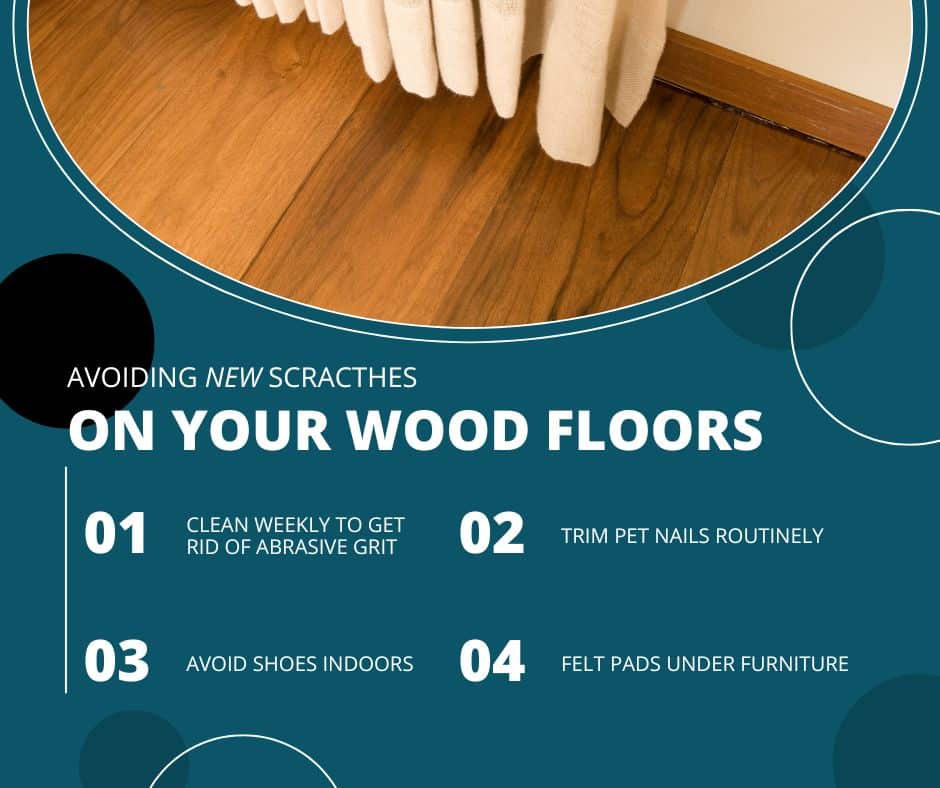
Other Maintenance & When to Call a Professional
Regular maintenance goes a long way in protecting your floors and spotting problems early:
- Recoat your floors every few years to protect the finish
- Look for signs of moisture damage or warping around baseboards or corners
- Avoid wet mopping or steam cleaners unless your flooring manufacturer recommends it
- Schedule routine home inspections to check for hidden water damage beneath the flooring
These small steps help protect your investment and avoid bigger issues later on. Sometimes, what looks like a cosmetic problem can signal something more serious—like water intrusion, subfloor damage, or uneven settling.
Alpha Building Inspections can help you identify moisture issues and more beneath your floors that are linked to roof or plumbing leaks, subfloor movement, and hidden wear that could affect value or safety.
If you’re preparing to sell, buying a home with wood floors, or noticing recurring damage that doesn’t seem to stay fixed, a professional home inspection can reveal what’s really going on.
Final Thoughts
You might not be able to remove all scratches from your hardwood floors—but you can usually reduce the look of them, protect the wood underneath, and prevent future damage with a few simple steps. A little time and attention go a long way.
If you’re unsure whether your floor damage is just cosmetic, or a sign of something bigger, schedule a home inspection with Alpha Building Inspections. Our expert team can help you catch issues early, protect your investment, and keep your home in shape.


